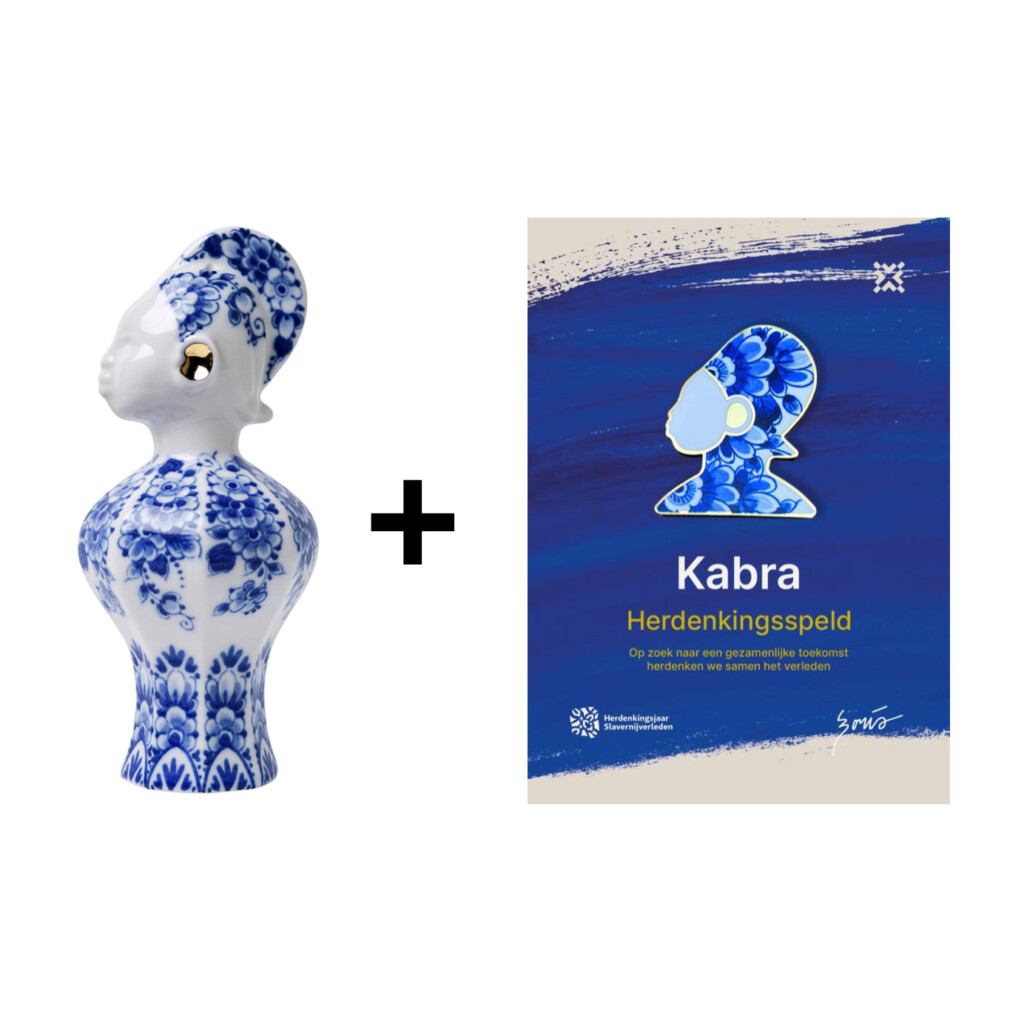Kabra Blue Salt Shaker
the ultimate memento of the Slavery History Commmoration year.
Written by the National Institute of Dutch Slavery History
History of salt
The National Institute of the Dutch Slavery History and Legacy (NiNsee) is launching the Kabra Blue Salt Cellar as the ultimate memento of the 2023-2024 Slavery History Commemoration Year. The Kabra Blue Salt Shaker symbolically reminds us of history, but at the same time offers space for connection, recognition, and reflection on the past. The keg ensures in an accessible way that the conversation about the history of Dutch slavery can be held at the kitchen table,” says Linda Nooitmeer, chairman of the board of NiNsee.
Salt played an important role in the Dutch slavery period. The natural mineral was mined from the 17th century by enslaved natives and Africans in the salt pans of Bonaire, Curaçao, and St. Maarten, among others. In addition, the salt mines on Bonaire formed a penal colony for anyone who refused to obey the Dutch rulers on the islands in the vicinity.
Salt production was described as white hell. The hard labor took place in degrading conditions. In low salt water and in the blazing heat, huge chunks of salt were reduced in size and bagged for trade. The physical complaints that enslaved people suffered from the continuous production, such as blindness due to the blinding sun on the snow-white salt mountains, had to be taken for granted. At the same time, salt turned out to be an enormously profitable product for the Dutch trade organization, the West India Company (WIC). Salt production by enslaved people continued until slavery was officially abolished by the Netherlands in 1863.
Kabra Blauw brings two traditions together
The appearance of the Kabra Blue Salt Cellar is partly inspired by the Kabra mask that plays a ceremonial role on July 1 – Keti Koti – during the National Commemoration of Dutch Slavery History. At the same time, the salt cellar is designed in the colors and style of Delft blue, a type of pottery that has been known as a traditional Dutch tradition since the 17th century.
Read more
But blue and white are also symbolic colors in the Afro-Surinamese winti ancestral culture. The color combination represents the Kabra, the ancestors. The blue refers to the royal ancestral line that exists in West Africa. The white represents death but also cleanliness and purity. What happens if we then bring these two traditions together in one (new) object? Will there be such a thing as Kabra Blue? Artist Boris van Berkum started the design process with this question.
Kabra Blauw is part of a larger winti art collection that Boris van Berkum is making in collaboration with the Surinamese-Dutch winti priestess Marian Markelo. For example, in 2013 he designed the Kabra mask (ancestor mask), which makes a ceremonial contribution to the libation every year during the commemoration, with which Marian opens the National Commemoration of Slavery History. Now, commissioned by the NiNsee, a Kabra Blue Salt Shaker is being added.
The development and production of the salt cellars is in the hands of the Dutch company Heinen Delfts Blauw . Kabra Blue salt cellars are for sale from 1 July in the museum shops of the Tropenmuseum , the Depot of Museum Boijmans Van Beuningen and the webshops www.dutchmuseumgiftshop.nl, heinendelftsblauw.
You can read more information about Kabra Blue here.




